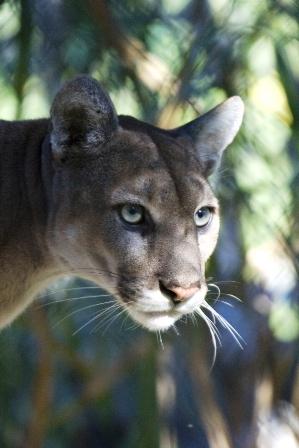Editor's note: Talk of restoring the Everglades in Florida has been going on for at least a decade, and yet relatively little progress has been made. Now, in the footsteps of an administration that seemingly did little to spur the restoration and which had blinders on when it came to the health of Everglades National Park, the Obama Administration seems to be taking a more determined approach. Jacquie Weisblum, the Everglades Team Leader for Audubon of Florida, looks at recent progress on the restoration front.
Florida’s Everglades is the only ecosystem of its kind in the world, providing ideal habitat and foraging grounds for abundant and diverse wildlife, such as roseate spoonbills and the Florida panther. Stretching from the Kissimmee chain of lakes, south through Lake Okeechobee, the greater Everglades is crowned at its southern end by Everglades National Park and Florida Bay.
All these systems are under stress because human activities have damaged the vast wetlands by diverting freshwater flows. Following decades of ditching, draining, and diverting water out of the Everglades, the state of Florida and the federal government back in 2000 committed more than $11 billion to its restoration.
Over the past nine years, Florida had taken the lead to invest resources into Everglades restoration while the federal government’s commitment waned. A new day dawned this year when President Obama’s Administration made a clear commitment to restore federal funds to bringing this unique natural treasure back to health. And just in time. As a result of years of human activities to cultivate the land for urban and agricultural purposes the health of the Everglades declined as its size was dramatically reduced and its essential ingredient -- water -- was diverted to the coasts.
The profusion of wildlife has diminished severely and more than 90 percent of the historic wading bird populations have disappeared. Furthermore, the quality of freshwater has been compromised and the Everglades is now home to more than 60 federally endangered and threatened species, including the Florida panther and the wood stork.
Everglades restoration activities have been in planning stages more than 20 years. The overarching goal of these activities is to reconnect the ecosystem that has been partitioned due to ditching and draining activities aimed at drying out the Everglades.
There are more than 70 restoration plans addressing various parts of the greater Everglades ecosystem, from the Kissimmee River to Florida Bay. However, there a few projects, concentrated at the bottom of the system, that are focused on bringing about ecological benefits to Everglades National Park and Florida Bay.
The heart of the national park’s water supply is Northeast Shark River Slough. Unfortunately, sufficient volumes of water have been stopped from reaching this once-nourishing epicenter. A road, called Tamiami Trail, runs along the north border of the park and prevents water from entering the park in a consistent manner. In 1989, Congress authorized the Modified Water Deliveries Project (Mod Waters) to create opportunities for freshwater to flow south of Tamiami Trail. This project had been bogged down by years of planning issues and litigation, but finally, just last week, a federal judge cleared the way for a one-mile bridge to be built on the road, thus allowing more water to enter the park.
In addition to the 1-mile bridge, the National Park Service has just initiated a planning process to make further improvement to Tamiami Trail. This planning process will pick up right where Mod Waters left off as it intends to raise more portions of the road in order to allow water to flow. The Park Service is following through on the federal government’s promise to get more desperately needed water into the park.
A large portion of Florida Bay is encompassed within the park’s boundaries. The health of Florida Bay is essential to the economy of South Florida, as it is an important recreational and commercial fishing site. As a result of reduced flows of freshwater into the bay, seagrasses and wildlife alike have suffered. The roseate spoonbill, the indicator species for the health of the bay, has just endured its two worst nesting seasons since the 1960s. Efforts are under way to remove an enormous canal that was dug into the park and that has acted to divert freshwater away from Florida Bay.
Once the harmful impacts of this canal are removed, Florida Bay should begin to recover as freshwater replenishes and balances the bay.
Buoying up these steps forward is the Obama Administration, which in just a short period of time has demonstrated its commitment to restoring the Everglades by stepping up and allocating real funding to restoration projects throughout the system.
The Everglades received historic funding as part of the stimulus plan and President Obama has allocated exciting funding levels in his FY10 budget proposal. Additionally, Secretary of the Interior Ken Salazar just announced that he has taken the steps to put the Everglades back on the list of World Heritage Sites in Danger by the United Nation’s World Heritage Committee.
The Everglades was incredulously removed from that list based on the recommendation of the previous federal administration. We expect the momentum created by the Obama Administration to increase as the state-federal partnership is improved and as Everglades restoration projects start getting built and ecological benefits are achieved.
Everglades National Park and Florida Bay are international treasures. Although human actions have caused tremendous damage to the natural system, important initiatives are under way to heal and restore characteristics of what was loss. It is important to support the state of Florida and the Obama Administration on their commitments to restoring the one and only Everglades.




Add comment